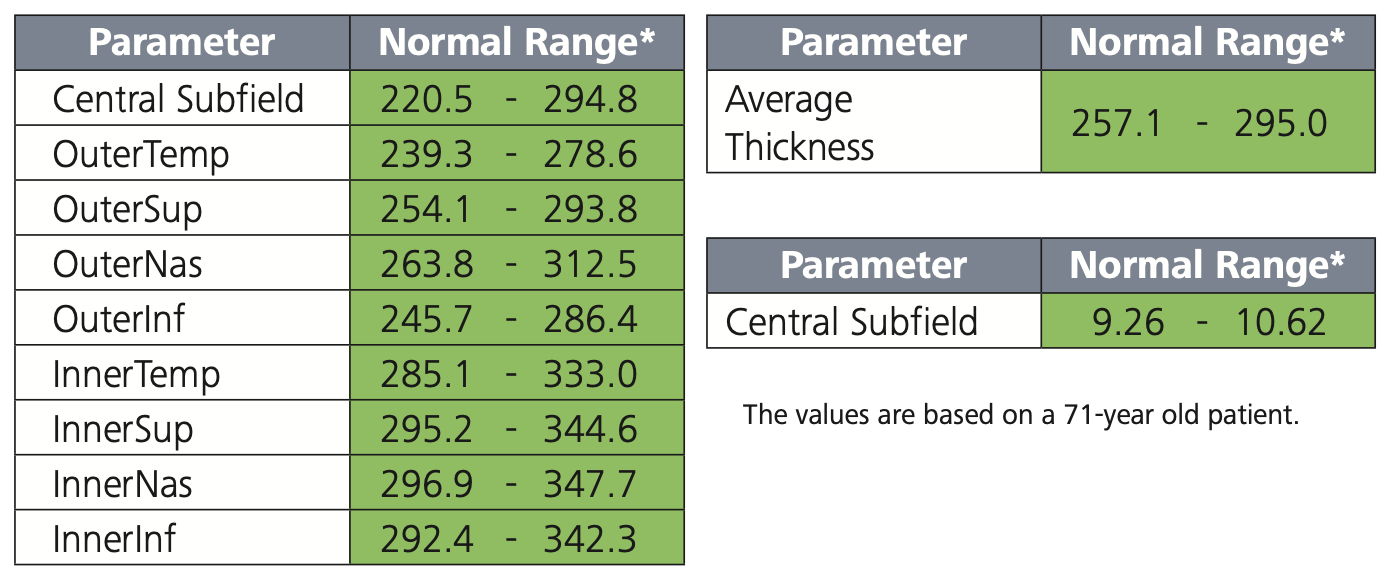 |
|
First-year variability in CRT was predictive of long-term visual outcomes in patients with nAMD, and 20% of the variability could be used to classify patients by high and low variability. Photo: Zeiss. Click image to enlarge. |
Due to the progressive nature of legal blindness, early evaluation and timely prediction are important in patients with neovascular age-related macular degeneration (nAMD). In a recent study, researchers examined the association between early-stage variations in central retinal thickness (CRT) and long-term visual outcomes in patients with nAMD.
A total of 103 nAMD patients were administered anti-VEGF. Early-stage variability in CRT was measured as the first-year coefficient of variability of CRT, in which a threshold of 20% was used to categorize 76 qualified patients into high variability (46.1%) and low variability (53.9%). The five- and 10-year overall visual preservation for patients with high vs. low variability were 76% vs. 48%, and 59% vs. 22%, respectively. Patients with an early-stage CRT variability higher than 20% were more likely to experience legal blindness.
“Although studies have been conducted to explore the relationship between CRT and VA, there is no strong evidence suggesting that CRT can be used to predict visual outcomes,” the authors explained. “In our study, a similar result was obtained that simple forms of CRT, including CRT baseline, CRT y1 and CRT change, were not predictors of VA. In contrast, consistent with our observations, higher CRT variability was associated with worse VA in patients with nAMD receiving anti-VEGF treatment.”
They noted that due to the main limitation of previous studies, such as the evaluation of variability using measurements from the entire course, these findings cannot be used for disease prediction. “In this study, only the first-year CRT measurements were used to establish the prediction model; thus, patients’ long-term visual outcomes could be predicted after the first year of treatment. Other indexes such as first half-year and first two-year variability can also measure the early-stage variation of CRT,” the researchers added.
One explanation for the greater variation in CRT during anti-VEGF therapy could be that patients with higher variability usually show extreme CRT values, which has been demonstrated as an independent risk factor for adverse visual outcomes.
“Another possible reason for the high variability of CRT could be that the patients were not receiving enough treatment as prescribed by the doctors,” the investigators explained. “On the other hand, although the total number of injections was similar in these two groups, the high-variability group patients may not have timely and sufficient injections in the first couple of months, which may lead to the high variability of CRT in-turn. Our findings emphasize the importance of early assessment of disease. Patients with different early-stage variabilities have completely different risks of blindness, which would be helpful in long-term disease management.”
Guo Y, Wu J, Zheng X, et al. The first-year variation in central retinal thickness predicts legal blindness in patients with neovascular age-related macular degeneration. Ophthalmic Research. November 25, 2022. [Epub ahead of print]. |

